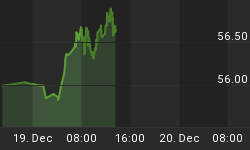We offer some levels to watch in coming weeks
Chairman Bernanke's announcement on Wednesday surprised a lot of traders who expected the Fed to begin reducing its asset purchases this month. News that the party wasn't over sent stocks popping like so many champagne corks. The S&P 500 (INDEXSP.INX) rose by more than 25 points in a little more than an hour. However, by the next morning the bubbly had started going flat. By Friday, traders were pouring it down the drain. The mood was further diminished by comments from the president of the Federal Reserve Bank of St. Louis, suggesting that tapering could begin as early as October.
Taking a position before a Fed announcement is risky. While gains can be spectacular, so can losses. For intraday trading, we generally advise our subscribers just to stay out until the market starts presenting actual setups. Following that rule, our trading room found some excellent moves to the downside on Thursday and Friday. However, looking beyond the intraday window, what should readers here expect if they are trading or investing based on weekly charts or even higher timeframes?
A healthy market would not give back gains as quickly as we saw last week. Even so, any bears who were encouraged to take positions near the end of last week could see another rally jammed in their faces, as has happened so many times during the past month. Thus, for anyone but the most nimble traders, it is too late to go long and too early to be short. In this week's Market Outlook, highlight some signals we detect in the S&P 500, and we present levels to watch both above and below.
On the monthly chart, price is not far from Fibonacci-related targets at 1,766 and 1,823. The zone between those levels should be an attractor, but we also see that the index is currently moving past a 77-month cycle crest. Moreover, we see an important exhaustion signal emerging from the "Nine-Five Indicator" from the Wave59 software package. Prior signals from that indicator have almost always coincided with an inflection of some type, although the inflections did not always turn into reversals.

The weekly chart shows that momentum is waning, as with many of the stock indices we have featured in recent articles. This can be seen in the divergence between price peaks (higher highs) and momentum peaks on the CCI indicator (lower highs). It can also be seen in the way price itself was unable to reach the attractor represented by the midline of the channel. Instead of racing to touch it last week, it approached and then retreated.
The midline still represents an attractor, and this week it coincides with the 1,748 price level. However, if prices fall through the support represented by last Friday's low, then a test of the lower end of the channel becomes more likely, in the vicinity of 1,653. An extended version of this article is posted on our website. In it, we take the analysis to the daily timeframe and suggest some signs that might show whether the post-Fed decline is likely to continue.

This article originally appeared at Trading On The Mark.















